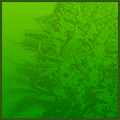|
We Update Daily!
 Custom Search Custom Search
Chris S. Kenoyer. Owner
MMJ Patient, Medical Activist,
Online Patients Advocate,
Online MMJ News Journalist
My Personal Medical Bio
Follow Us Now On Twitter
@MedicalMMJMan
Or Follow Us Now
On Facebook
Email Us Here
olpwebs@yahoo.com
Or Email Us Securely Here
MedicalMMJMan@countermail.com
NEW 100% Encrypted Email Server
OLP’s Free MMJ News EList
Get The Latest In MMJ News
Press Contact Info
Is CBD? A Possible Cure For
Breast Cancer..? And All The Other
Many Forms & Types Of Cancer..?
Learn More About CBD Here
***************************
Advertise Here On OnlinePot
Rates As Low As $50 a Year
24/7 – 365 Days A Year Of Sales!
***********************************
Website Navigational Links
Main Start Page 2
**************************
Latest Marijuana News Reports
*********************************
Parody’s Cartoons US
Government Grown Pot,
Term Papers, School
Reports, & Thesis’s On
Marijuana & Cannabis
*********************************
Amsterdam A to Z
********************************
Canadian Marijuana Websites
*******************************
Church’s & Pot Cannabis
*****************************
Co-Ops, Clinics, Dispensary’s
*****************************
Marijuana Doctors & Clinics
****************************
Pot Cooking Recipes
****************************
Drug Testing A To Z
***************************
Pot Games
****************************
Pot Songs Video’s
****************************
100’s Of Grow Guides
***************************
Hash A- Z
***************************
Cannabis Legal Info, Drug
Lawyers, State, Federal Laws,
State & Supreme Court Rulings
**********************
POW’s Of The MMJ War!
*****************************
Other Marijuana Websites
Reciprocal Link Exchange
****************************
Medical Marijuana Studies,
Research Report’s, Medical
Cannabis Clinic Study’s
****************************
Parody’s & Cartoons
When We All Need A Good Laugh!
****************************
Avoiding Online MOM Scammers
Newly Re-Updated Info!
*****************************
The Politics Of Contraband
Medical Marijuana In The Mail?
******************************
The Hall Of Shame Section
The Online MOM Scammers
*****************************
Online MOM Providers Ads
****************************
Politicians & Voters Rights
****************************
Medical Marijuana, Strains
****************************
The OG Marijuana Strain Guide
****************************
800+ FAQ Growing Questions
****************************
Patients Spiritual Guidance,
Free Online Crisis Help Center
****************************
Online Marijuana Seed Banks
****************************
Maximum Security Section
Just Updated!
*****************************
Traveling Tips, Guides, B & B’s
****************************
Vaporizers A To Z
*****************************
Online Pot Video’s & Movies
**********************************************
Please Visit Both Of Our Sister Websites!
Maine Patients Coalition.org
The Reefer Madness Teaching Museum.org
Listen Right Here Online!
To Original 1930-1950’s
Reefer Madness Propaganda
Radio Shows And Programs
Before TV There Were
"Radio Stars"



*********************************
Legal Disclaimer
Guest Book
Translate Text or Web Page Go To:
Language Tools Google Translations
Article Submissions & News
Reports Are Always Gladly
Accepted Here.

No part of this site maybe used or
reproduced in whole or in part
without the written consent of the
Copyright Owner
www.onlinepot.org
OLP ENTERPRISES LLC
1999-2013 Copyright
? All rights reserved
OnlinePot assumes no legal liability for any products, or information or
news posted, services offered, Or
any contests or give away’s offered.
|
|
GrowFAQ :
Nutrient Disorder Problem Solver by Jackerspackle
| Added by: administrator Last edited by: administrator Viewed: 104 times |
Rated by 16 users: 9.18/10 |
Nutrient Disorder Problem Solver Version 1.1 – Feb. 1998 – distribution okay
To use the Problem-Solver, simply start at #1 below. When you think you’ve found the problem, read the Nutrients section to learn more about it. Diagnose carefully before making major changes.
1) If the problem affects only the bottom or middle of the plant go to #2. b) If it affects only the top of the plant or the growing tips, skip to #10. If the problem seems to affect the entire plant equally, skip to #6.
2) Leaves are a uniform yellow or light green; leaves die & drop; growth is slow. Leaf margins are not curled-up noticeably. >> Nitrogen(N) deficiency. b) If not, go to #3.
3) Margins of the leaves are turned up, and the tips may be twisted. Leaves are yellowing (and may turn brown), but the veins remain somewhat green. >> Magnesium (Mg) deficiency. b) If not, go to #4.
4) Leaves are browning or yellowing. Yellow, brown, or necrotic (dead) patches, especially around the edges of the leaf, which may be curled. Plant may be too tall. >> Potassium (K) deficiency. b) If not, keep reading.
5) Leaves are dark green or red/purple. Stems and petioles may have purple & red on them. Leaves may turn yellow or curl under. Leaf may drop easily. Growth may be slow and leaves may be small. >> Phosphorus(P) deficiency. b) If not, go to #6.
6) Tips of leaves are yellow, brown, or dead. Plant otherwise looks healthy & green. Stems may be soft >> Over-fertilization (especially N), over-watering, damaged roots, or insufficient soil aeration (use more sand or perlite. Occasionally due to not enough N, P, or K. b) If not, go to #7.
7) Leaves are curled under like a ram’s horn, and are dark green, gray, brown, or gold. >> Over-fertilization (too much N). b) If not, go to #8?
8) The plant is wilted, even though the soil is moist. >> Over-fertilization, soggy soil, damaged roots, disease; copper deficiency (very unlikely). b) If not, go to #9.
9) Plants won’t flower, even though they get 12 hours of darkness for over 2 weeks. >> The night period is not completely dark. Too much nitrogen. Too much pruning or cloning. b) If not, go to #10…
10) Leaves are yellow or white, but the veins are mostly green. >> Iron (Fe) deficiency. b) If not, go to #11.
11) Leaves are light green or yellow beginning at the base, while the leaf margins remain green. Necrotic spots may be between veins. Leaves are not twisted. >> Manganese (Mn) deficiency. b) If not, #12.
12) Leaves are twisted. Otherwise, pretty much like #11. >> Zinc (Zn) deficiency. b) If not, #13.
13) Leaves twist, then turn brown or die. >> The lights are too close to the plant. Rarely, a Calcium (Ca) or Boron (B) deficiency. b) If not? You may just have a weak plant.
The Nutrients:
Nitrogen – Plants need lots of N during vegging, but it’s easy to overdo it. Added too much? Flush the soil with plain water. Soluble nitrogen (especially nitrate) is the form that’s the most quickly available to the roots, while insoluble N (like urea) first needs to be broken down by microbes in the soil before the roots can absorb it. Avoid excessive ammonium nitrogen, which can interfere with other nutrients. Too much N delays flowering. Plants should be allowed to become N-deficient late in flowering for best flavor.
Magnesium – Mg-deficiency is pretty common since marijuana uses lots of it and many fertilizers don’t have enough of it. Mg-deficiency is easily fixed with ? teaspoon/gallon of Epsom salts (first powdered and dissolved in some hot water) or foliar feed at ? teaspoon/quart. When mixing up soil, use 2 teaspoon dolomite lime per gallon of soil for Mg. Mg can get locked-up by too much Ca, Cl or ammonium nitrogen. Don’t overdo Mg or you’ll lock up other nutrients.
Potassium – Too much sodium (Na) displaces K, causing a K deficiency. Sources of high salinity are: baking soda (sodium bicarbonate “pH-up”), too much manure, and the use of water-softening filters (which should not be used). If the problem is Na, flush the soil. K can get locked up from too much Ca or ammonium nitrogen, and possibly cold weather.
Phosphorous – Some deficiency during flowering is normal, but too much shouldn’t be tolerated. Red petioles and stems are a normal, genetic characteristic for many varieties, plus it can also be a co-symptom of N, K, and Mg-deficiencies, so red stems are not a foolproof sign of P-deficiency. Too much P can lead to iron deficiency.
Iron – Fe is unavailable to plants when the pH of the water or soil is too high. If deficient, lower the pH to about 6.5 (for rockwool, about 5.7), and check that you’re not adding too much P, which can lock up Fe. Use iron that’s chelated for maximum availability. Read your fertilizer’s ingredients – chelated iron might read something like “iron EDTA”. To much Fe without adding enough P can cause a P-deficiency.
Manganese – Mn gets locked out when the pH is too high, and when there’s too much iron. Use chelated Mn.
Zinc – Also gets locked out due to high pH. Zn, Fe, and Mn deficiencies often occur together, and are usually from a high pH. Don’t overdo the micro-nutrients-lower the pH if that’s the problem so the nutrients become available. Foliar feed if the plant looks real bad. Use chelated zinc.
Check Your Water – Crusty faucets and shower heads mean your water is “hard,” usually due to too many minerals. Tap water with a TDS (total dissolved solids) level of more than around 200ppm (parts per million) is “hard” and should be looked into, especially if your plants have a chronic problem. Ask your water company for an analysis listing, which will usually list the pH, TDS, and mineral levels (as well as the pollutants, carcinogens, etc) for the tap water in your area. This is a common request, especially in this day and age, so it shouldn’t raise an eyebrow. Regular water filters will not reduce a high TDS level, but the costlier reverse-osmosis units, distillers, and de-ionizers will. A digital TDS meter (or EC = electrical conductivity meter) is an incredibly useful tool for monitoring the nutrient levels of nutrient solution, and will pay for itself before you know it. They run about $40 and up.
General Feeding Tips – Pot plants are very adaptable, but a general rule of thumb is to use more nitrogen & less phosphorous during the vegetative period, and the exact opposite during the flowering period. For the veg. period try a N:P:K ratio of about 10:7:8 (which of course is the same ratio as 20:14:16), and for flowering plants, 4:8:8. Check the pH after adding nutrients. If you use a reservoir, keep it circulating and change it every 2 weeks. A general guideline for TDS levels is as follows:
seedlings = 50-150 ppm; unrooted clones = 100-350 ppm; small plants = 400-800 ppm; large plants = 900-1800 ppm; last week of flowering = taper off to plain water. These numbers are just a guideline, and many factors can change the actual level the plants will need. Certain nutrients are “invisible” to TDS meters, especially organics, so use TDS level only as an estimate of actual nutrient levels. When in doubt about a new fertilizer, follow the fertilizer’s directions for feeding tomatoes. Grow a few tomato or radish plants nearby for comparison.
PH – The pH of water after adding any nutrients should be around 5.9-6.5 (in rockwool, 5.5-6.1). Generally speaking, the micro-nutrients (Fe, Zn, Mn, Cu) get locked out at a high pH (alkaline) above 7.0, while the major nutrients (N, P, K, Mg) can be less available in acidic soil or water (below 5.0). Tap water is often too alkaline. Soils with lots of peat or other organic matter in them tend to get too acidic, which some dolomite lime will help fix. Soil test kits vary in accuracy, and generally the more you pay the better the accuracy. For the water, color-based pH test kits from aquarium stores are inexpensive, but inaccurate. Invest in a digital pH meter ($40-80), preferably a waterproof one. You won’t regret it.
Cold – Cold weather (below 50F/10C) can lock up phosphorous. Some
varieties, like equatorial sativas, don’t take well to cold weather. If you can keep the roots warmer, the plant will be able to take cooler temps than it otherwise could.
Heat – If the lights are too close to the plant, the tops may be curled, dry, and look burnt, mimicking a nutrient problem. Your hand should not feel hot after a minute when you hold it at the top of the plants. Raise the lights and/or aim a fan at the hot zone. Room temps should be kept under 85F (29C) — or 90F (33) if you add additional CO2.
Humidity – Thin, shriveled leaves can be from low humidity. 40-80 % is usually fine.
Mold and Fungus – Dark patchy areas on leaves and buds can be mold. Lower the humidity and increase the ventilation if mold is a problem. Remove any dead leaves, wherever they are. Keep your garden clean.
Insects – White spots on the tops of leaves can mean spider mites
underneath.
Sprays – Foliar sprays can have a “magnifying glass” effect under bright lights, causing small white, yellow or burnt spots which can be confused with a nutrient problem. Some sprays can also cause chemical reactions.
Insufficient light – tall, stretching plants are usually from using the wrong kind of light.. Don’t use regular incandescent bulbs (“grow bulbs”) or halogens to grow cannabis. Invest in fluorescent lighting (good) or HID lighting (much better) which supply the high-intensity light
that cannabis needs for good growth and tight buds. Even better, grow in sunlight.
Clones – yellowing leaves on unrooted clones can be from too much light, or the stem may not be firmly touching the rooting medium. Turn off any CO2 until they root. Too much fertilizer can shrivel or wilt clones – plain tap water is fine.
If this helped, send a few dollars to NORML.
Best of luck,
jackerspackle |
| Last modified: 14:23 – Nov 11, 2000 |
|
|
Quicklink: http://overgrow.com/growfaq/58
GrowFAQ © 2000-2004 Overgrow
faq:58 “Nutrient Disorder Problem Solver by Jackerspackle” |
|
|
|
|
|



 Button Ads!
Button Ads! 




